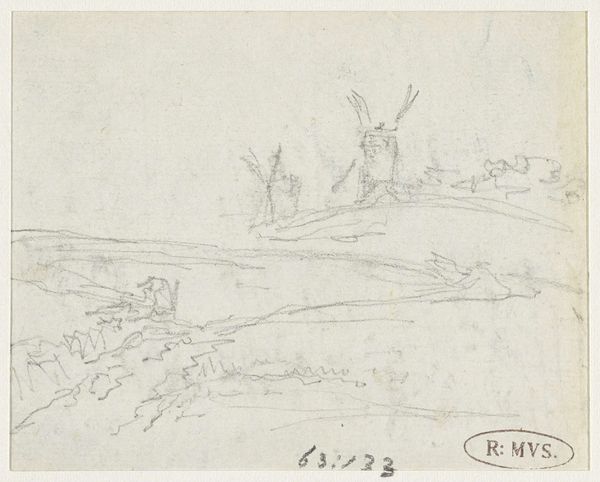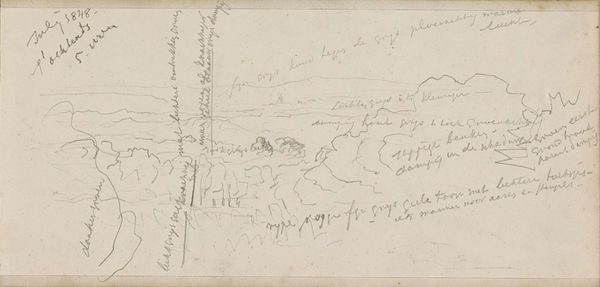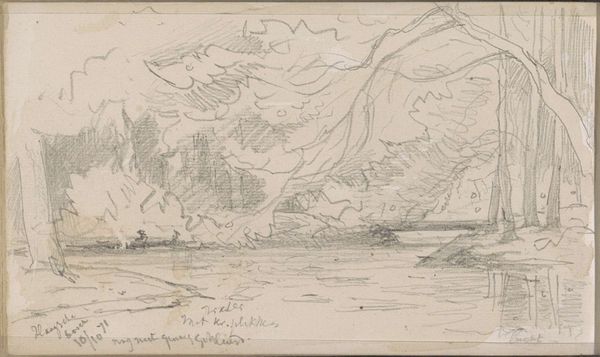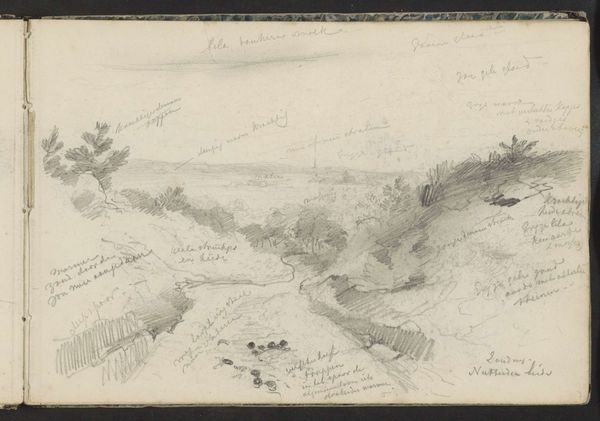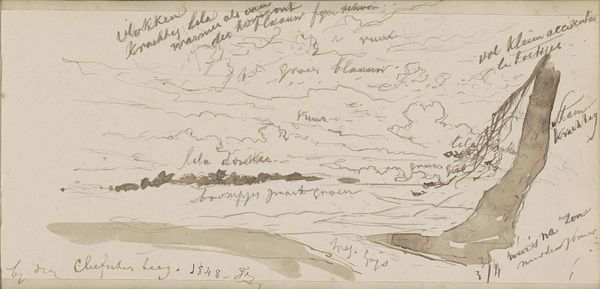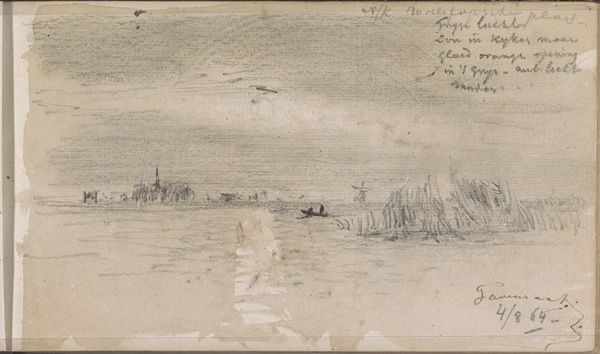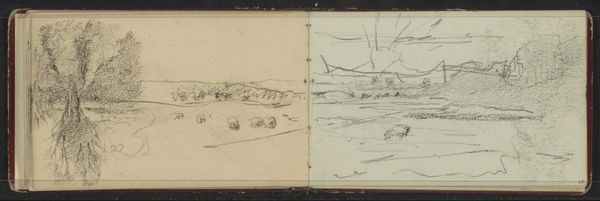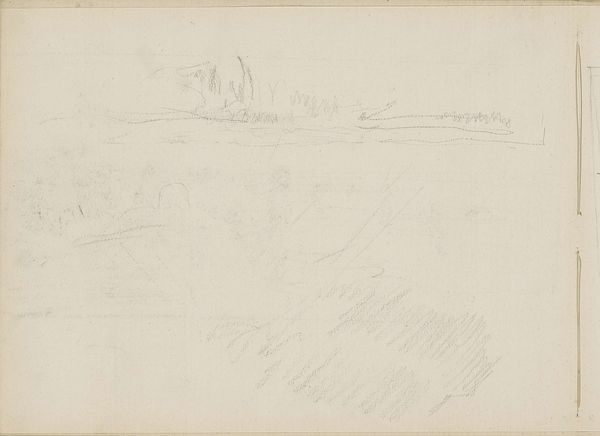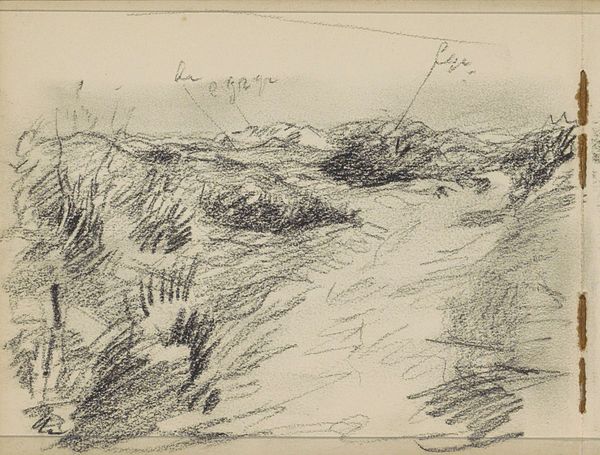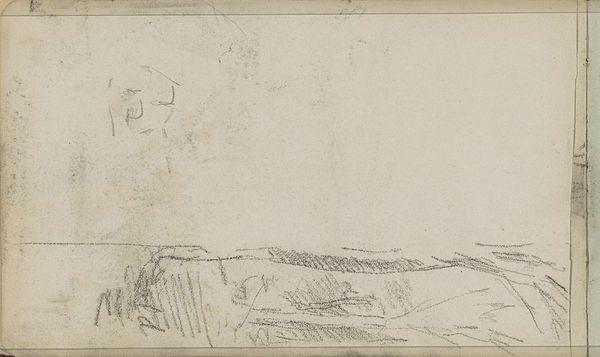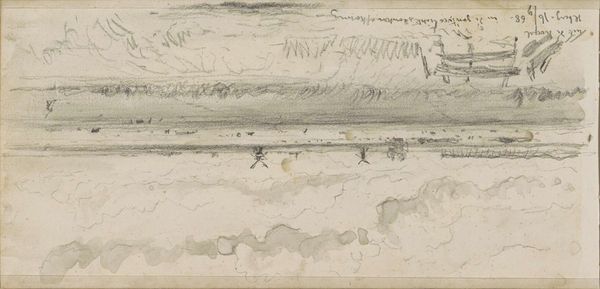
drawing, print, pencil
#
drawing
#
dutch-golden-age
# print
#
pen sketch
#
landscape
#
pencil
#
realism
Copyright: Rijks Museum: Open Domain
Curator: This small drawing, "Landschap met windmolens," or "Landscape with Windmills," was created around 1865 by Johannes Tavenraat. It's currently housed in the Rijksmuseum. What strikes you first about this work? Editor: The muted tones evoke a quiet solitude, even starkness. The landscape feels vast, yet very thinly sketched, unfinished even. Curator: It’s rendered primarily in pencil, with delicate pen work. Given its time, within the Dutch Golden Age revival, the imagery certainly taps into collective memories of national identity rooted in landscape, especially the iconic windmills. Editor: The windmills are clearly meant to act as signifiers for "Dutchness," invoking a historical connection. However, they also have a universality, speaking to broader ideas of progress and harnessing natural forces. The lonely figure amidst the tall grass—what do you make of it? Is that figure perhaps a symbol of humankind's place in a changing landscape? Curator: The figure seems small and relatively obscured—perhaps illustrating our transient, temporal state compared to the timeless presence of the land. This invokes classic Dutch vanitas symbols – the ephemeral nature of human life juxtaposed against something seemingly eternal, but of course, nothing lasts forever, especially landscapes reworked by the effects of industrial society and global economics. Even national symbols, such as the windmills, shift meaning in tandem. Editor: You're right, I see those vanitas echoes now, and that makes it much more powerful for me. This seemingly simple drawing carries layers of complex reflection, doesn't it? The technique, its realism, almost lulls us, until we start to probe further at our historical awareness. Curator: Exactly, what may initially read as an unassuming scene encapsulates a layered commentary on national memory and the passage of time itself. Editor: It serves as a gentle reminder of our complicated relationship with both the past and the environment, and perhaps a call for balance. Curator: Indeed, Tavenraat uses quiet strokes to express loud questions.
Comments
No comments
Be the first to comment and join the conversation on the ultimate creative platform.
